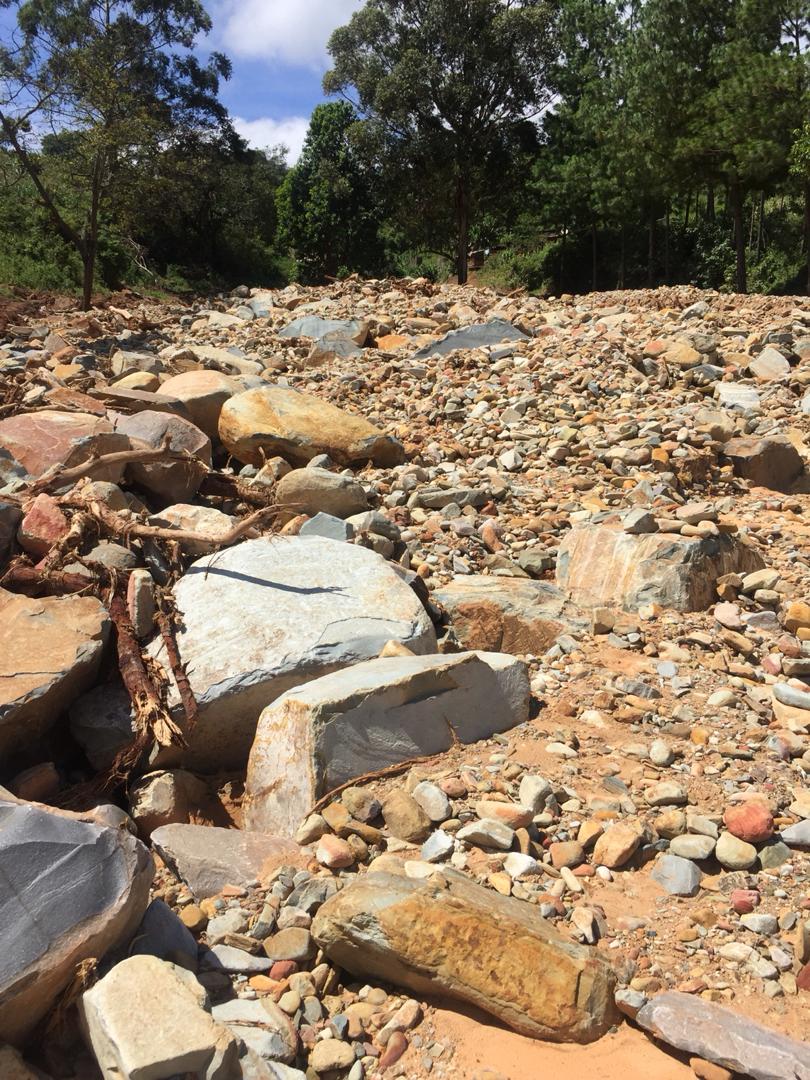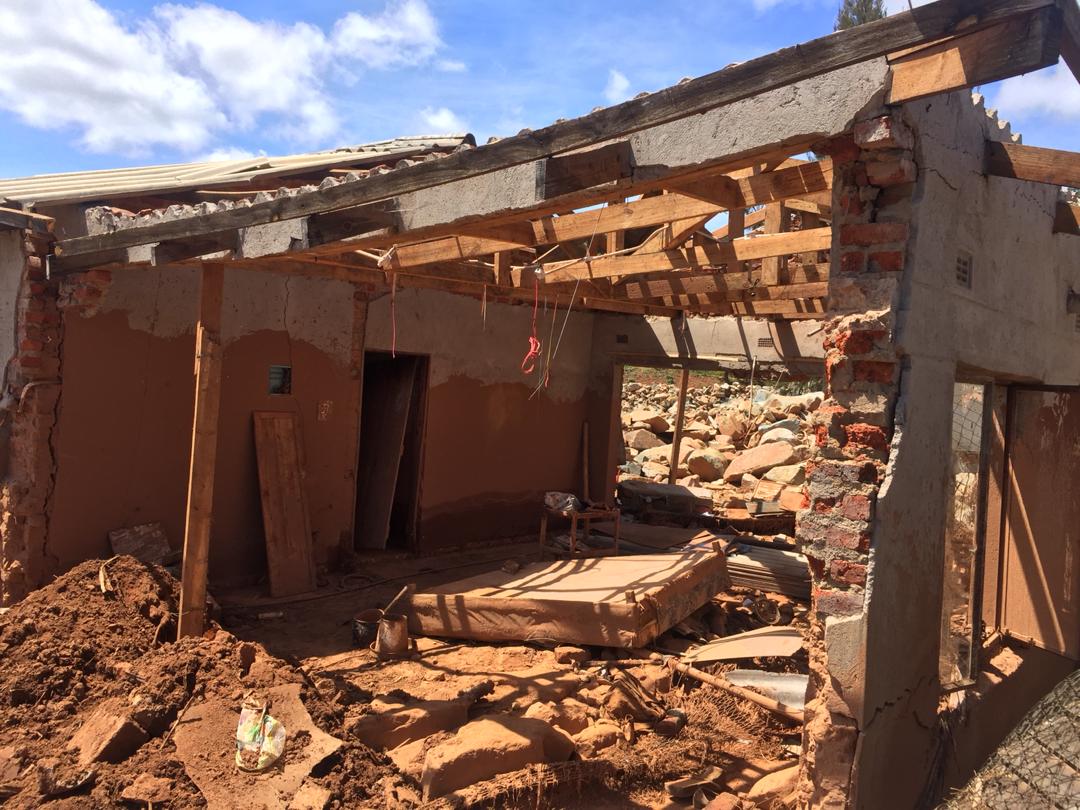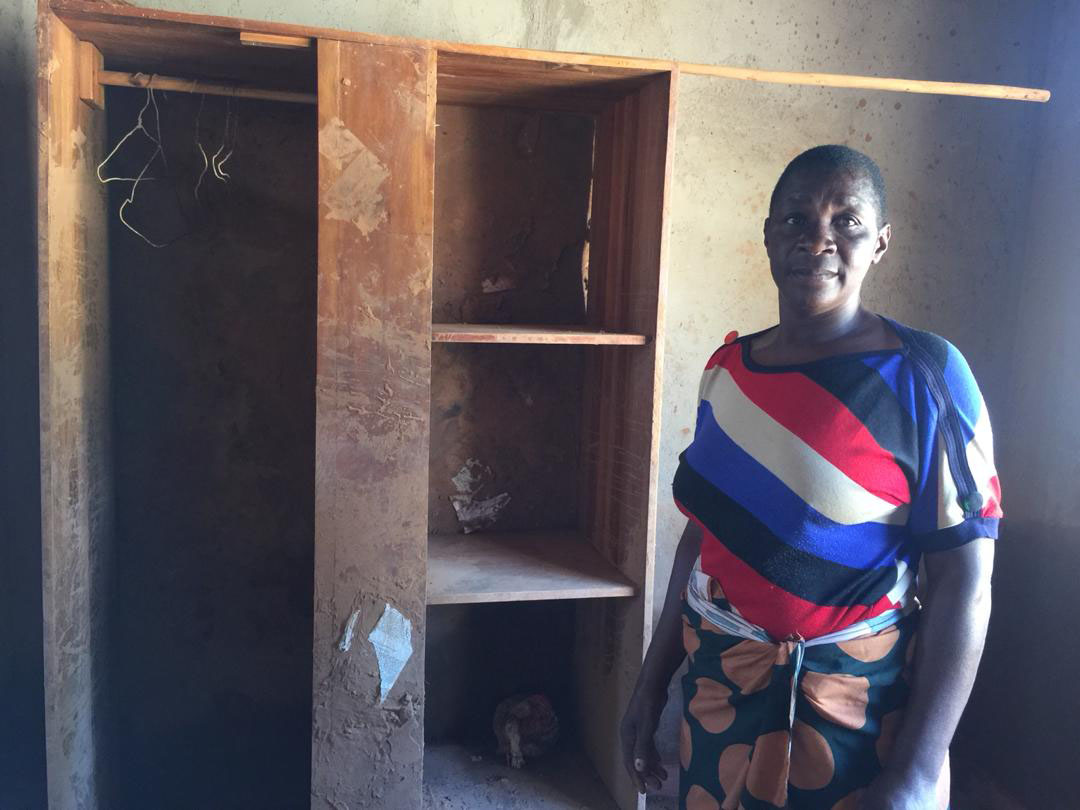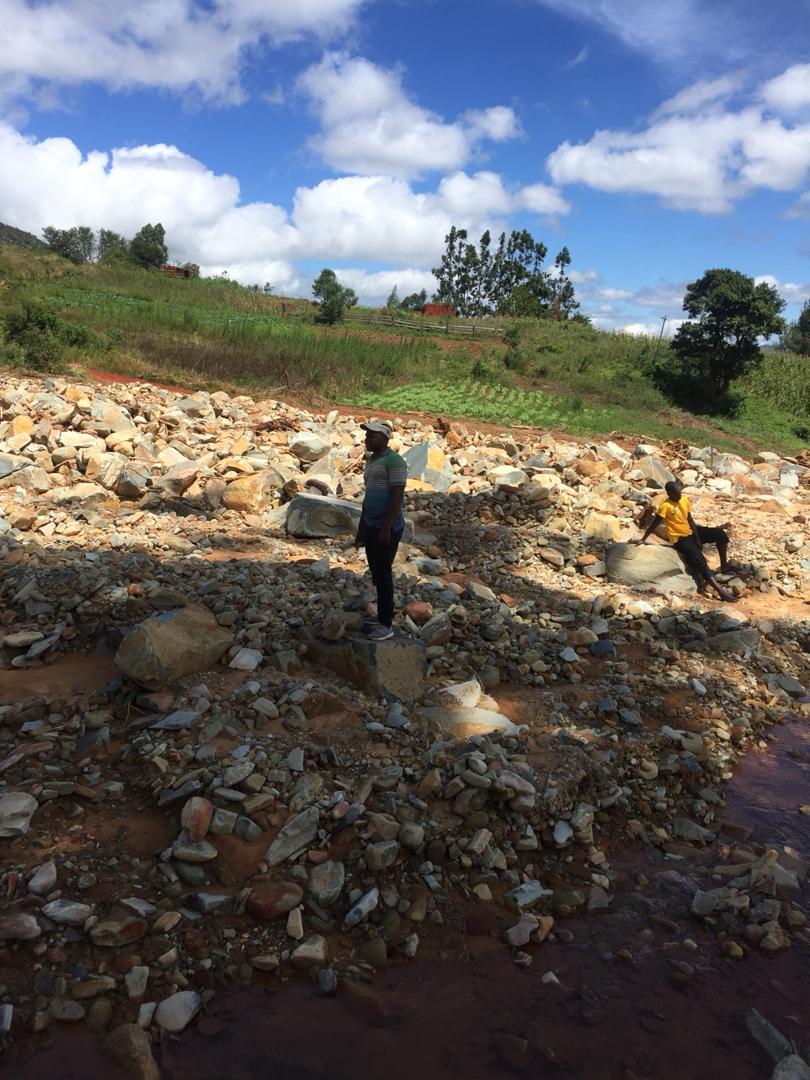Sitting on the floor with her hands clasped on her chin at Chimanimani hotel, Edina Kabayanjiri narrates how the tropical cyclone destroyed her home and took her two-year-old daughter away with no trace of her whereabouts to date.
“It was on Friday evening when it started raining and water started coming out of the floor in the kitchen where I was cooking. It was a struggle but I had no choice as I had to prepare food for my two-year old daughter before we (Kabayanjiri and her husband) could retire to sleep,” she said.
They were woken up by a terrifying sound and strange movement under the house as muddy rain water poured into the house before taking it away along with everyone and everything in it.
“As we were holding on to the door for safety, heavy muddy floods took me and my daughter away. She was strapped on to my back but suddenly the kanga tying her to me came loose and she was taken away from me,” Kabayanjiri told Daily Maverick.
“I was saved from being drowned by a combination of the floating walls of a dismantled pit latrine and uprooted trees but my legs were trapped under a boulder and a barbed wire fence.”
Kabayanjiri cried out for help, which she said she got after three hours. She found refuge in a nearby home for the rest of the night.
The 34-year old Kabayanjiri, a resident of Chimanimani the South-eastern district of Zimbabwe that was the epicentre of Cyclone Idai, fears her daughter could have been swept across the border into Mozambique.
Though 82 bodies from Zimbabwe were recently buried in the neighbouring country, they were unidentified.
Large puddles of water and rocks of different shapes and sizes are all that remains of what used to be some residential areas in Chimanimani district in the wake of the most vicious cyclone to hit the country in decades.

Some of the residential areas in Chimanimani are in ruins, Wednesday 3 April 2019. Photo: Sally Nyakanyanga
The mountainous eastern part of the country bore the brunt of tropical cyclone Idai as roads, bridges and other vital infrastructure were swept away, homes reduced to rubble and lives lost.
The storm, said to be one of the worst ever to hit the Southern Hemisphere, tore through Mozambique and spread as far as Malawi and Zimbabwe, causing extreme flooding in all three countries.
In Chimanimani alone, according to the Assistant District Administrator, 169 people died, 328 are still missing, 164 are injured with 2,251 houses destroyed, leaving 4,073 people in need of shelter.
According to the International Organisation on Migration (IOM), a total of 259 people lost their lives in Zimbabwe due to the cyclone, with 217 still missing and 16,000 households displaced. Overall, close to 300,000 people are in need of aid due to the devastating effects of the tropical storm.
Dr Leonard Unganai, a climate change expert at Oxfam Zimbabwe explained that changing weather patterns, with 2018 being the warmest year on record, have created favourable conditions for cyclones to occur.
“Oceans are warming up and the regions that experience temperatures favourable to tropical cyclone formation are growing. Temperatures in the tropical regions are becoming warm enough for cyclone intensification.
“As climate change continues and deepens, so do these storms as well. As such, a greater occurrence of not only severe damage from storms, but damage over a larger region should be expected,” Unganai added,
Daily Maverick spoke to Taona Nengomasha, Assistant District Administrator for Chimanimani District, who described the tropical cyclone as one of the worst to ever hit the area.
“This one was an ambush. We had never experienced something like this before. Imagine a mountain bursting. It was a sight never before seen in this area as the mountain erupted and destroyed houses,” Nengomasha said.
In 2000, Cyclone Eline affected only parts of the district, particularly those situated towards the west. As such, most people in the rest of Chimanimani District never anticipated it would reach their part of the region.
Looking towards the future, Nengomasha averred that there was a need for proper house planning to ensure that henceforth people would be appropriately sheltered.
“We have learnt that before establishing proper human settlement there is a need to conduct a proper scientific study as Chimanimani is a mountainous area,” he added.
Nengomasha pointed out that, in that regard, a group of scientists from several Zimbabwean universities were already conducting a topographical study of the area using drones but their findings were yet to be released.
As for the immediate needs of the people affected by the disaster, many have been accommodated at schools, a local hotel and churches as they wait to be moved where there are tents or temporary shelter.
“So far people are being housed in temporary shelters and we have received 400 tents from Red Cross,” says Nengomasha.
In the long term, the Chimanimani Rural District Council says once it gets land, with both sewer and water systems in place, together with support from various players, it will construct semi-detached homes for affected families.

What remains of Theresa Mushuma’s home, Wednesday April 3, 2019. Photo: Sally Nyakanyanga
However, Theresa Mushuma, whose house was partially damaged by the cyclone in Chimanimani, has already started removing rubble and cleaning up the house so as to enable her to store the donated items her family has since received.

Theresa Mushuma inside her partially damaged house in Chimanimani. Photo after she returned to clear the rubble, Wednesday April 3, 2019. Photo: Sally Nyakanyanga
“I have been staying for two weeks at a community school and there is no safety and the process of relocation can take long so I will put my belongings here for the time being until we are given a new place to go to,” she said.
This is despite a concrete beam hanging precariously loose at one corner of her once beautiful house, threatening to bring down that section of the house at any moment.
For local business people, they can only see their businesses returning to normal after a year.

Ephraim Nyamatanda in Tafara, a small residential area in Chimanimani that was destroyed by the cyclone. Photo: Sally Nyakanyanga
Ephraim Nyamatanda, a local grocery shop owner, had his fleet of vehicles, his maize field and banana plantation destroyed.
“We are starting afresh and people cannot sustain their lives on a hand-to-mouth basis. We need to resuscitate our agriculture base to build up household incomes,” he said.
There is an urgent need for proper reticulation and sewer systems as the pipes were destroyed and the water system is not working. There has been alarms of a cholera outbreak, though no cases have since been reported in Zimbabwe, in Mozambique, more than 1,000 cases of cholera have been reported with two people having died as a result.
Whilst some parts of Chimanimani District are now accessible and a great number of people are receiving emergency support, residents of the district are anxious to know where they go from here and whether anticipated rehabilitation projects will see the light of day any time soon.
As for Edina Kabayanjiri, she continues to pray for news of the whereabouts her missing baby even though she has lost all hope of ever finding her alive. Her life will remain in limbo until the baby’s body is found. With the baby’s death certificate, she hopes to have closure and move to Harare where she will join her mother-in-law and her three remaining children.DM


















 Become an Insider
Become an Insider